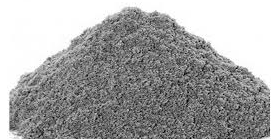Aggregate is the granular material used to produce concrete or mortar. Sand is a form of silica (quartz) and may be of argillaceous, siliceous or calcareous according to its composition. Natural sands are formed from weathering of rocks (mainly quartzite) and are of various size or grades depending on the intensity of weathering. The sand grains may be of sharp, angular or rounded. Aggregates passing through 4.75mm sieve and retained on 75micron sieve is termed as fine aggregate.
Fine aggregate sand is important ingredient of mortar and cement concrete. Sand particles consist of small grains of silica. It is formed by decomposition of sand stone due to various effects of weather. River sand is widely used as fine aggregate. Fine aggregates are classified as follows:
- Source of Origin
- Grain Size
- Composition
I) Classification according to Sources of Origin
Sand particles consist of small grains of silica (Si02). It is formed by the decomposition of sand stones due to various effects of weather. The following are the natural sources of sand.
1) Pit Sand
This sand is found as deposits in soil and it is obtained by forming pits to a depth of about 1m to 2m from ground level. Pit sand consists of sharp angular grains, which are free from salts for making mortar. Clean pit sand free from organic matter and clay should be used.
2) River Sand
This sand is obtained from beds of rivers. River sand consists of fine rounded grains. Colour of river sand is almost white. As the river sand is usually available in clean condition, it is widely used for all purposes.
3) Sea Sand
This sand is obtained from sea shores. Sea sand consists of rounded grains in light brown colour. Sea sand consists of salts which attract the moisture from the atmosphere and causes dampness, efflorescence and disintegration of work. Due to all such reasons, sea sand is not recommendable for engineering works. However be used as a local material after being thoroughly washed to remove the salts.
The natural product which is obtained as river sand & pit sand is called sand.
II) Classification Fine Aggregate According to Grain Size
|
Fine
aggregate |
Size variation (mm) |
|
Coarse Sand |
0.5 – 2.0 |
|
Medium sand |
0.25 – 0.5 |
|
Fine sand |
0.060 – 0.25 |
|
Silt |
0.0020 – 0.06 |
|
Clay |
<0.002 |
III) Classification Fine Aggregate According to Composition
1) Clean Sand
2) Silty Sand
3) Clayey Sand
Requirement of good sand
- It should be hard
- It should be chemically inert
- It should be free from salts
- It should free from organic matters
- It should be well graded
Uses of sand
- It is used in mortar
- It is used in concrete
- It is used for the filling the gaps between the building blocks
- It is used as binding materials in the form of paste
- It prevents the shrinkage of cementing materials.
Alternatives to river sand
- Manufactured sand
- Processed quarry dust
- Processed crushed rock fines
- Offshore sand
- Processed glass
- Aluminum saw mill waste
- Granite fines slurry
- Washed soil (filtered sand)
- Fly ash (bottom ash/ pond ash)
- Slag sand
- Copper slag sand
- Construction Demolition waste
Manufactured Sand (M-Sand)
Advantages of Manufactured Sand
- It is well graded in the required proportion. It does not contain organic and soluble compound that affects the setting time and properties of cement, thus the required strength of concrete can be maintained.
- It does not have the presence of impurities such as clay, dust and silt coatings, increase water requirement as in the case of river sand which impair bond between cement paste and aggregate. Thus, increased quality and durability of concrete.















0 comments:
Post a Comment